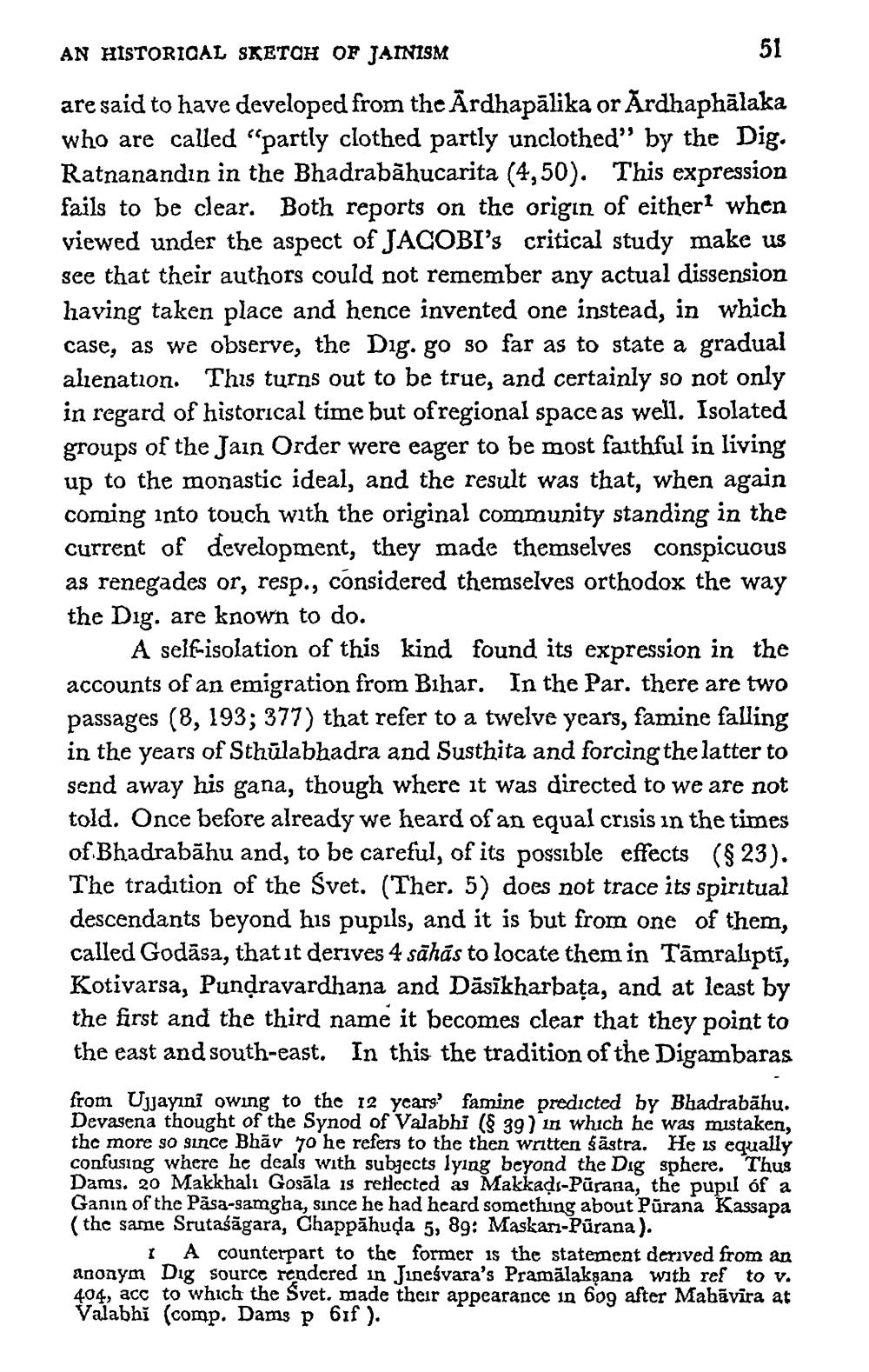________________
AN HISTORICAL SKETCH OF JAINISM
51
are said to have developed from the Ardhapālika or Ardhaphālaka who are called "partly clothed partly unclothed” by the Dig. Ratnanandın in the Bhadrabāhucarita (4,50). This expression fails to be clear. Both reports on the origin of either? when viewed under the aspect of JACOBI's critical study make us see that their authors could not remember any actual dissension having taken place and hence invented one instead, in which case, as we observe, the Dig. go so far as to state a gradual alienation. This turns out to be true, and certainly so not only in regard of historical time but ofregional space as well. Isolated groups of the Jain Order were eager to be most faithful in living up to the monastic ideal, and the result was that, when again coming into touch with the original community standing in the current of development, they made themselves conspicuous as renegades or, resp., considered themselves orthodox the way the Dig. are known to do.
A self-isolation of this kind found its expression in the accounts of an emigration from Bihar. In the Par. there are two passages (8, 193; 377) that refer to a twelve years, famine falling in the years of Sthūlabhadra and Susthita and forcing the latter to send away his gana, though where it was directed to we are not told. Once before already we heard of an equal crisis in the times of Bhadrabāhu and, to be careful, of its possible effects ($ 23). The tradition of the Svet. (Ther. 5) does not trace its spiritual descendants beyond his pupils, and it is but from one of them, called Godāsa, that it derives 4 sāhās to locate them in Tamralipti, Kotivarsa, Pundravardhana and Däsīkharbața, and at least by the first and the third name it becomes clear that they point to the east and south-east. In this the tradition of the Digambaras
from Ujjayıní owing to the 12 yearg' famine predicted by Bhadrabāhu. Devasena thought of the Synod of Valabhi ( 39 ) in which he was mistaken, the more so since Bhãy 70 he refers to the then written Sastra. He is equally confusing where he deals with subjects lying beyond the Dig sphere. Thus Dams. 20 Makkhalı Gosāla is reflected as Makkad-Purana, the pupil of a Ganın of the Påsa-samgha, since he had heard something about Purana Kassapa (the same Srutaśāgara, Chappāhuda 5, 89: Maskari-Purana).
A counterpart to the former is the statement derived from an anonym Dig source rendered in Jueśvara's Pramālakṣana with ref to v. 404, acc to which the Svet, made their appearance in bog after Mahavira at Valabhi (comp. Dams p 6ıf ).




